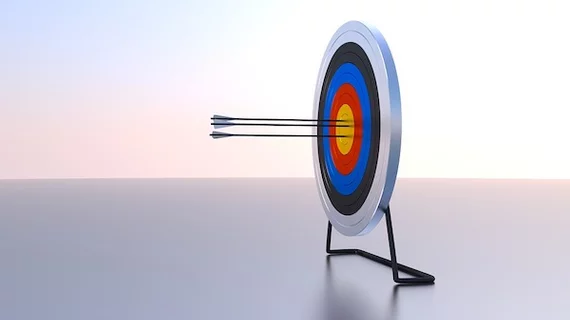3D ultrasound (US) was determined to be as accurate as 2D US in diagnosing development dysplasia of the hip (DDH), a recent study found, with the 3D variety reducing the need for follow-up imaging by more than two-thirds.
The study was published in Radiology.
“We found that performance of automatically calculated 3D indexes of acetabular shape (angularity and roundness) was at least equivalent to high-quality 2D US scans performed at tertiary medical centers to diagnose DDH, and it reduced the number of indeterminate borderline scans by over two-thirds,” wrote corresponding author Jacob L. Jaremko, MD, PhD, with the department of radiology and diagnostic imaging at the University of Alberta in Canada, and colleagues.
To compare the diagnostic accuracy of each modality, researchers retrospectively analyzed 2D and 3D US images of 1,728 infants evaluated for DDH. Scans were taken across three years from four separate institutions in Canada, Australia, Pennsylvania and Singapore.
Each hip was classified as normal, borderline (questionably abnormal initially but resolved at follow-up) or dysplastic. To determine outcomes, the group observed clinical care for an average of eight months after imaging.
Results showed the area under the receiver operating characteristic curve was high for both 3D US indexes (0.996) and 2D US alpha angle (0.987). This suggests three-dimensional imaging is on-par with 2D US, but authors praised the value of the additional information 3D US provided.
“Because the indexes are generated from 3D data, they provide additional information regarding the 3D shape of the acetabular surface and are more reliable than the single-plane image of 2D US,” authors wrote.
Additionally, 3D US correctly categorized 97.5 percent of dysplastic hips and 99.4 percent of normal hips. The technique also correctly diagnosed 69.3 percent of the studies at initial imaging, which were found to be borderline in initial 2D US scans—resulting in a 72.1 percent reduction of borderline diagnoses.
“Qualitative review of 3D US images and surface models may help experts to provide subjective impressions of hip development, providing value beyond a numeric index of dysplasia and aiding in individualized treatment planning,” Jaremko et al. wrote.

